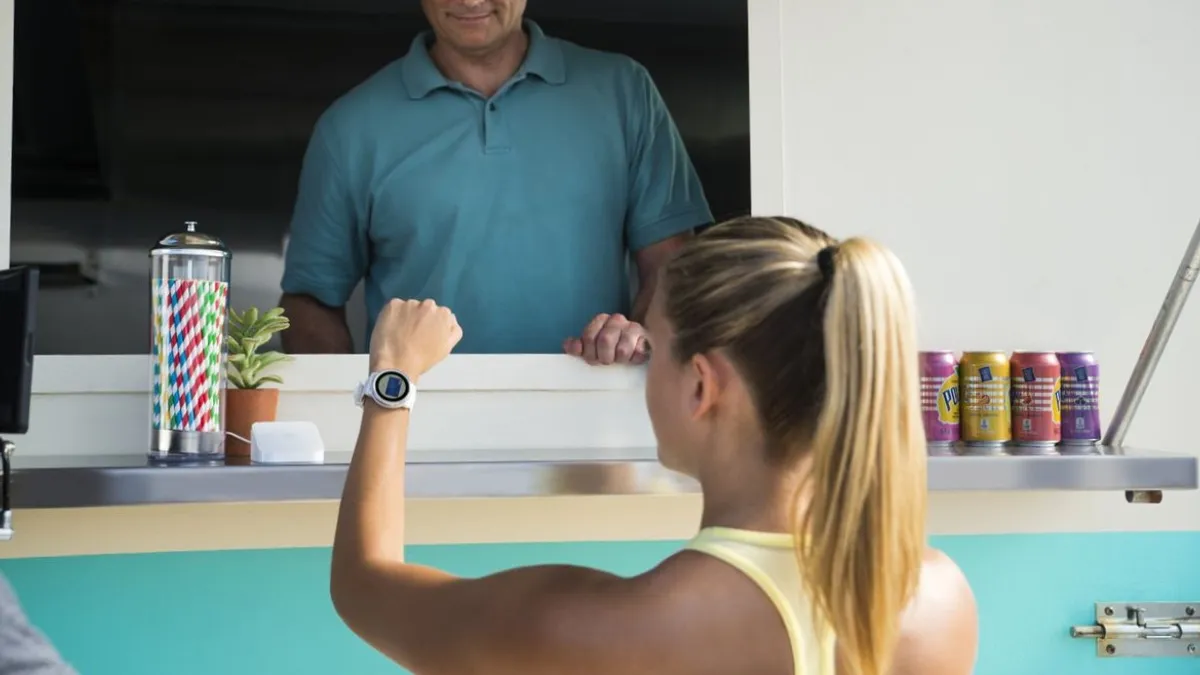Dive Brief:
- Manufacturers are now expected to ship out 27 million fewer wearables this year than previously forecast as consumers cut down on non-essential purchases and supply chains flag amid the COVID-19 pandemic, according to global tech market advisory firm ABI Research.
- The group anticipates wearables shipments in 2020 to total 254 million, instead of the previously forecast 281 million. That represents an almost 10% drop, though still a slight increase from 2019's volume of 241 million shipments.
- Analysts expect a drawn-out recovery for the sector as wearables bolster their advanced health monitoring features and consumers remain increasingly health-conscious, buoying the wearables market in the second half of 2020 and clearing the path for an expected 289 million wearable shipments in 2021.
Dive Insight:
The pandemic is depressing the wearables market as consumers close their purse strings for non-essentials in an attempt to ride out its economic effects. But the novel coronavirus has accelerated the shift to digital care, and growing patient adoption of telehealth and virtual care strategies like remote patient monitoring could be a net positive for wearables manufacturers in the long term.
Researchers now peg the year-over-year increase in wearable shipments at 5% from 2019 to 2020, down from the previously expected 17%. That's compared to 23% year-over-year growth between 2018 and 2019.
"While wearables will see fewer shipments this year than originally expected, shipments of devices that can track and monitor healthcare vitals has lowered the impact," Stephanie Tomsett, an ABI research analyst, said in a statement, noting that wearables are already being used to track the progression of COVID-19 and remotely monitor patients in their homes.
All wearables, not just health-focused devices, are expected to see a small increase in demand in the second half of the year, especially smartwatches and fitness and wellness trackers. Devices with health monitoring capabilities, though, are expected to have the strongest performance as the pandemic continues to drive medical awareness and consumers look for ways to get a handle on their health amid the new normal.
Wearables players are running a barrage of studies to test the efficacy of their devices in a race to add unique healthcare capabilities. Though smartwatches and other tools have issues with accuracy across devices, use cases and patient demographics — and there's little evidence trackers actually help consumers reach health goals — that hasn't stymied adoption. A little under a fifth of Americans report owning a smartwatch.
The biggest manufacturers — Apple, Fitbit and Samsung — already include or are developing health capabilities like EKG, sleep apnea detection, arrhythmia alerts, blood oxygen tracking, menstrual cycle tracking and more.
Manufacturers are also analyzing potential wider public health applications. Thirteen-year-old Fitbit is researching the role its devices could play in early detection of infectious diseases like the coronavirus in partnership with Scripps Research and Stanford Medicine, before actual symptoms start. A January study published in The Lancet suggested widespread use of Fitbit's devices could be used to track flu outbreaks and disease spread.
Fitbit, which received emergency use authorization from the FDA this week for a new ventilator device for COVID-19 patients, accepted a $2.1 billion buyout bid from Google last year. The deal faces intense scrutiny from the U.S. Department of Justice and other regulators due to the massive amount of consumer information it would give Google, which has a spotty track record with data privacy.













